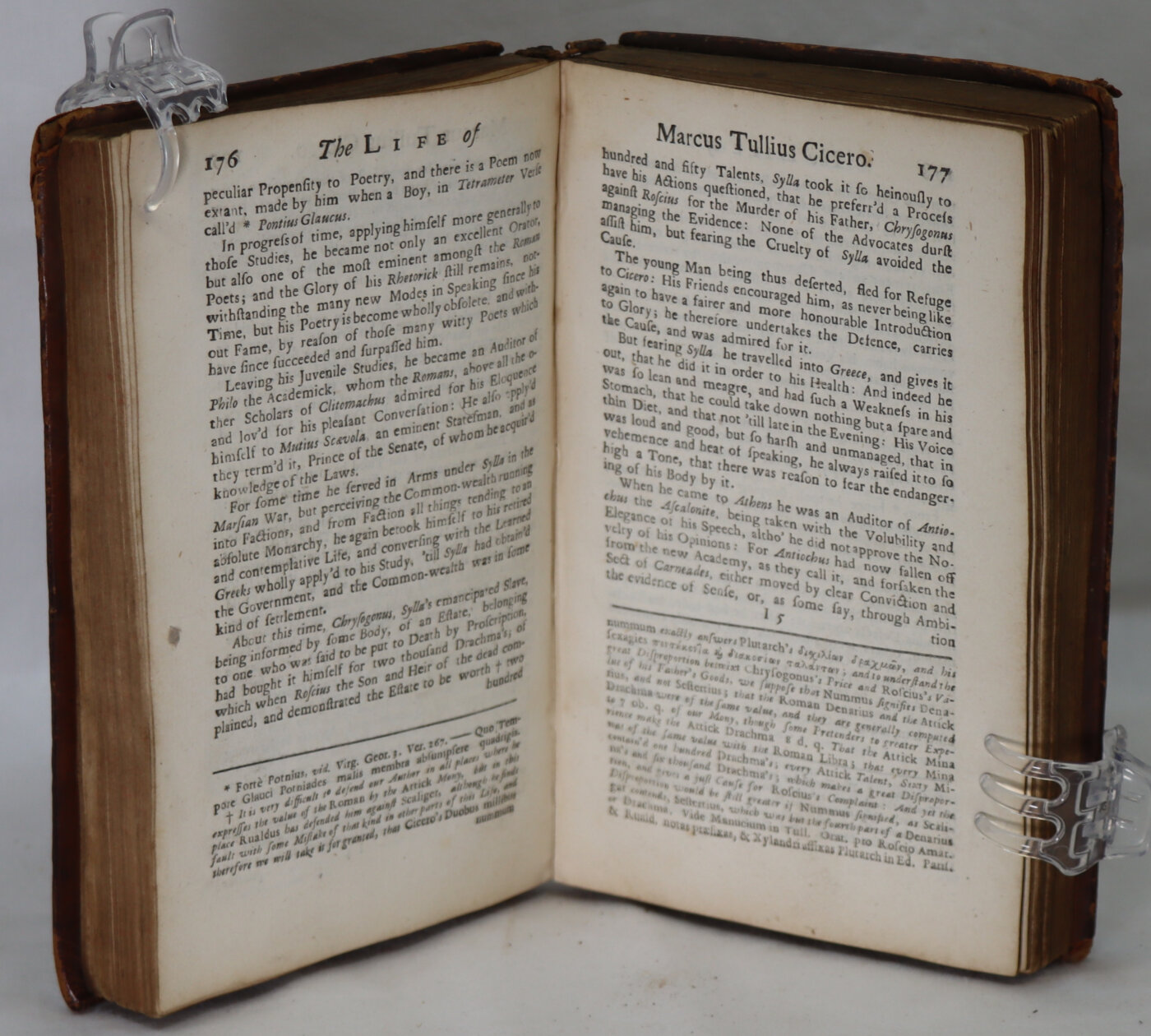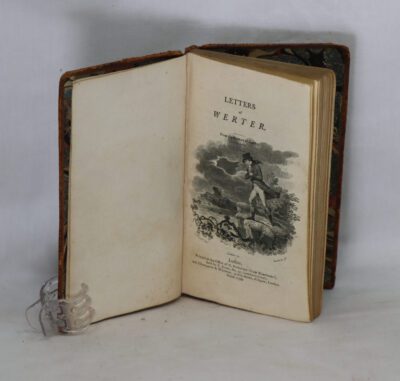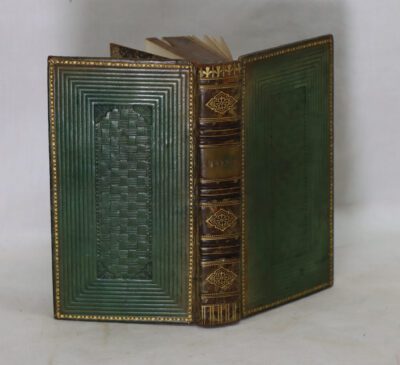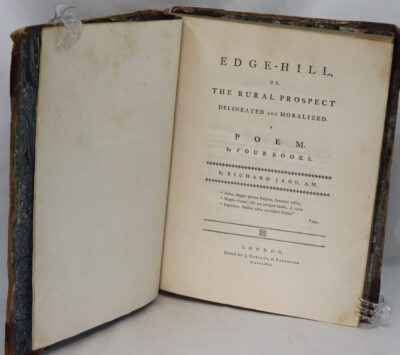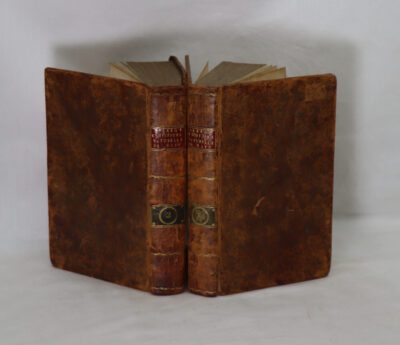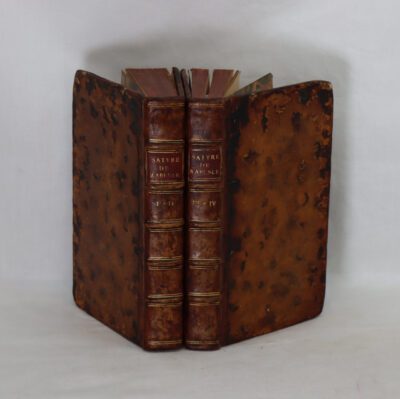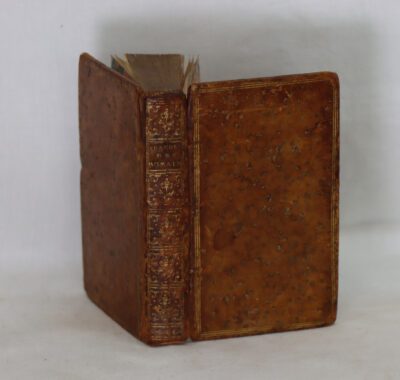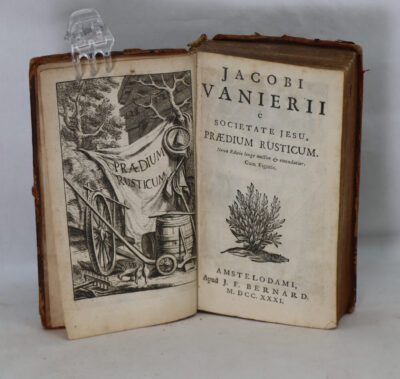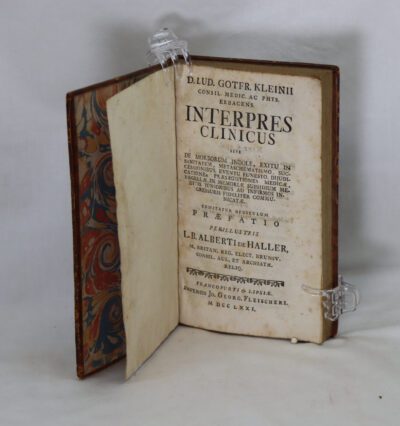Plutarch's Lives. Volume the Fifth.
By Plutarch
Printed: 1716
Publisher: Jacob Tonson. London
| Dimensions | 11 × 17 × 3 cm |
|---|---|
| Language |
Language: English
Size (cminches): 11 x 17 x 3
Condition: Very good (See explanation of ratings)
FREE shipping
Item information
Description
Tan calf binding with red title plate and title on the spine. Embossed ‘cambridge panel’ on the boards.
- We provide an in-depth photographic presentation of this item to stimulate your feeling and touch. More traditional book descriptions are immediately available
Note: This book carries a £5.00 discount to those that subscribe to the F.B.A. mailing list
The Fifth and Last Volume of Plutarch’s Lives. Translated from the Greek by Several Hands. [Includes: The Lives of Demetrius Poliocretes, Marcus Antonius, Demosthenes, Marcus Tullius Cicero, Aratus, Artaxerxes, Dion, Marcus Brutus, Galba & Otho].
A Single volume in good condition. Well illustrated and is as viewed. This is an early example of a classic book rendered into English.
Plutarch (Ancient Greek: Πλούταρχος, Ploútarchos; Koinē Greek: [ˈplúːtarkʰos]; c. AD 46 – after AD 119) was a Greek Middle Platonist philosopher, historian, biographer, essayist, and priest at the Temple of Apollo in Delphi. He is known primarily for his Parallel Lives, a series of biographies of illustrious Greeks and Romans, and Moralia, a collection of essays and speeches. Upon becoming a Roman citizen, he was possibly named Lucius Mestrius Plutarchus (Λούκιος Μέστριος Πλούταρχος).
Plutarch’s best-known work is the Parallel Lives, a series of biographies of illustrious Greeks and Romans, arranged in pairs to illuminate their common moral virtues and vices, thus it being more of an insight into human nature than a historical account. As is explained in the opening paragraph of his Life of Alexander, Plutarch was not concerned with history so much as the influence of character, good or bad, on the lives and destinies of men. Whereas sometimes he barely touched on epoch-making events, he devoted much space to charming anecdote and incidental triviality, reasoning that this often said far more for his subjects than even their most famous accomplishments. He sought to provide rounded portraits, likening his craft to that of a painter; indeed, he went to tremendous lengths (often leading to tenuous comparisons) to draw parallels between physical appearance and moral character.
The surviving Lives contain 23 pairs, each with one Greek life and one Roman life, as well as four unpaired single lives. Some of the Lives, such as those of Heracles, Philip II of Macedon, Epaminondas, Scipio Africanus, Scipio Aemilianus and possibly Quintus Caecilius Metellus Numidicus no longer exist; many of the remaining Lives are truncated, contain obvious lacunae or have been tampered with by later writers.
Extant Lives include those on Solon, Themistocles, Aristides, Agesilaus II, Pericles, Alcibiades, Nicias, Demosthenes, Pelopidas, Philopoemen, Timoleon, Dion of Syracuse, Eumenes, Alexander the Great, Pyrrhus of Epirus, Romulus, Numa Pompilius, Coriolanus, Theseus, Aemilius Paullus, Tiberius Gracchus, Gaius Gracchus, Gaius Marius, Sulla, Sertorius, Lucullus, Pompey, Julius Caesar, Cicero, Cato the Elder, Mark Antony, and Marcus Junius Brutus.
Want to know more about this item?

Share this Page with a friend


